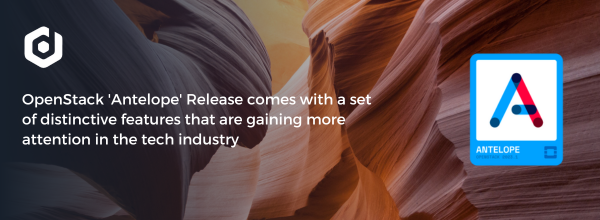Antelope’ is the latest release of OpenStack, which was introduced at the start of 2023. It comes with a set of distinctive features that are gaining more attention in the tech industry. As an open-source platform, OpenStack offers a vast range of components that enterprises can utilise to build and manage cloud infrastructures. In this blog post, we will dive into the components, characteristics, and aspects that make OpenStack Antelope stand out amongst its predecessors.
Key components in ‘Antelope’
OpenStack ‘Antelope’ comes with several components that stand out in terms of their performance and features. One such component is ‘Cyborg’ – a relatively new component that provides a unified management interface to manage heterogeneous computing resources. This feature allows users to manage resources such as FPGAs without worrying about vendor-specific constraints. Another notable component of the Antelope Release is networking, which now offers better integration with Kubernetes clusters which promotes efficient workload management.
Antelope offers increased scalability, security, and functionality compared to its previous versions. One of the new features is the “Placement API,” which enables users to reserve resources while ensuring there are no scheduling conflicts. Another noteworthy feature is the “Octavia load balancer,” which offers a scalable, workload-balancing mechanism. These features enable users to build and manage cloud infrastructures seamlessly.
The Benefits of OpenStack
OpenStack is beneficial to enterprises in many ways. Firstly, it offers a cost-effective way of managing cloud infrastructures. As an open-source platform, OpenStack provides all the necessary components and tools required to set up a cloud infrastructure without incurring additional costs. Secondly, it offers high scalability and flexibility that can be customized to suit the varying needs of an enterprise.
The Challenges
Migrating to OpenStack can be challenging for enterprises, especially those with legacy systems. Enterprises need to ensure that their systems can support the new features and components of OpenStack and be prepared to adopt new ways of managing cloud infrastructures, which can be time-consuming and costly. However, the benefits of OpenStack far outweigh these challenges, and Define Tech’s expert team is well-positioned to assist you with any Cloud migration requirements.
In Conclusion
Our HPC-optimised software – JedAI, which is built on OpenStack will is in the process of moving to Antelope release so as to pass on all of the scalability, flexibility, and security benefits that OpenStack affords. JedAI provides a cost-effective and efficient way of managing cloud infrastructures through a robust platform with an extensive range of components and features. Talk to us about your Cloud requirements today!

